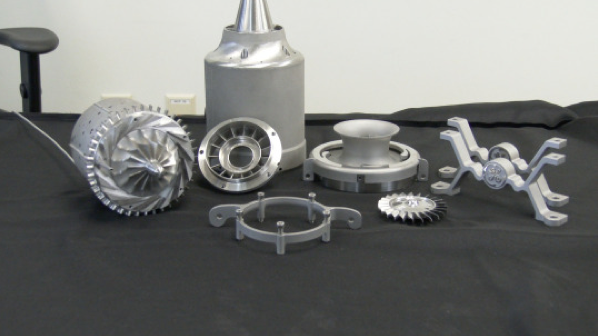General Electric today announced plans to spend $1.4 billion to acquire two of the world’s top suppliers of metal-based 3D printing manufacturing equipment, Arcam AB and SLM Solutions Group AG. Both companies will become part of GE’s Aviation division, where the technology will be used to increase GE’s production of aircraft components and other parts through additive manufacturing.

GE said it expects to grow the new additive manufacturing business to $1 billion by 2020 “at attractive returns” and also expects $3 billion to $5 billion of product cost-out across the company over the next 10 years.
“This is very big news!” Terry Wohlers, president of industry research firm Wohlers Associates, said in an email reply to Computerworld. “It could definitely help advance the development and adoption of metal additive manufacturing technology.”
As a whole, the additive manufacturing (3D printing) industry grew 25.9% last year to $5.1 billion in sales and services, according to the 21st edition of the Wohlers Report.
The compound annual growth rate (CAGR) over the previous three years was 33.8%; over the past 27 years, the CAGR for the industry has been 26.2%.
Worldwide revenues from additive manufacturing and 3D printing are expected to reach $12.8 billion by 2018, according to Wohlers Associates. By 2020, Wohlers forecasts revenues from all products and services in the 3D printer industry to exceed $21 billion.
In 2015, 62 manufacturers sold industrial-grade additive manufacturing systems that were valued at more than $5,000, compared to 49 in 2014. That’s twice as many as the 31 companies that sold industrial systems in 2011.
“European companies dominate the metal [additive manufacturing] space,” Wohlers said. “Arcam and SLM Solutions are among the top companies in the business of offering machines that produce metal parts by additive manufacturing. Arcam is different from most other metal [additive manufacturing] machines because it uses an electron beam as the energy source, whereas SLM Solutions and most others use a laser.”
Arcam AB, based in Mölndal, Sweden, invented the electron beam melting machine for metal-based additive manufacturing, and also produces advanced metal powders. Its customers are in the aerospace and healthcare industries. Arcam generated $68 million in revenues in 2015 with about 285 employees, according to GE.
In addition to its Sweden site, Arcam operates AP&C, a metal powders operation in Canada, and DiSanto Technology, a medical additive manufacturing firm in Connecticut., as well as sales and application sites worldwide.
SLM Solutions Group, based in Lübeck, Germany, produces laser machines for metal-based additive manufacturing with customers in the aerospace, energy, healthcare, and automotive industries. SLM, with 260 employees, generated $74 million in revenues in 2015. In addition to its operations in Germany, SLM has sales and application sites worldwide.
Last year, GE completed a multi-year project to 3D print a working jet engine.
The engine, small enough to fit in a backpack, was built by a team of technicians, machinists and engineers at GE Aviation’s Additive Development Center outside Cincinnati. The lab is working with additive manufacturing as a way to produce next-generation jet parts using a technique known as Direct Metal Laser Sintering (DMLM).
In July, GE Aviation introduced into airline service its first additive jet engine component — complex fuel nozzle interiors — with the LEAP jet engine. The LEAP engine is the new, best-selling engine from CFM International, a 50/50 joint company of GE and Safran Aircraft Engines of France.
More than 11,000 LEAP engines are on order, with up to 20 fuel nozzles in every engine, setting the stage for sustainably high and long-term additive production at GE Aviation’s Auburn, Ala. manufacturing plant. Production will ramp up to more than 40,000 fuel nozzles using additive manufacturing by 2020.
GE Aviation is also using additive to produce components in its most advanced military engines. In the general aviation world, GE is developing the Advanced Turboprop Engine (ATP) for a new Cessna aircraft with a significant portion of the entire engine produced using additive manufacturing.
“GE’s aspirations in additive fits our long-term business model. We have world-class industrial businesses that leverage systems integration, material sciences, services and Predix,”Jeff Immelt, Chairman and CEO of GE, said in a statement. “We want all of our businesses to leverage the GE Store, promote digital differentiation, and drive productivity for GE and our customers. We are excited about the opportunity.
“Additive manufacturing is a key part of GE’s evolution into a digital industrial company,” Immelt said. “…We are poised to not only benefit from this movement as a customer, but spearhead it as a leading supplier.”
This story, “GE to pay $1.4B for two 3D printing companies to expand manufacturing” was originally published by Computerworld.




































